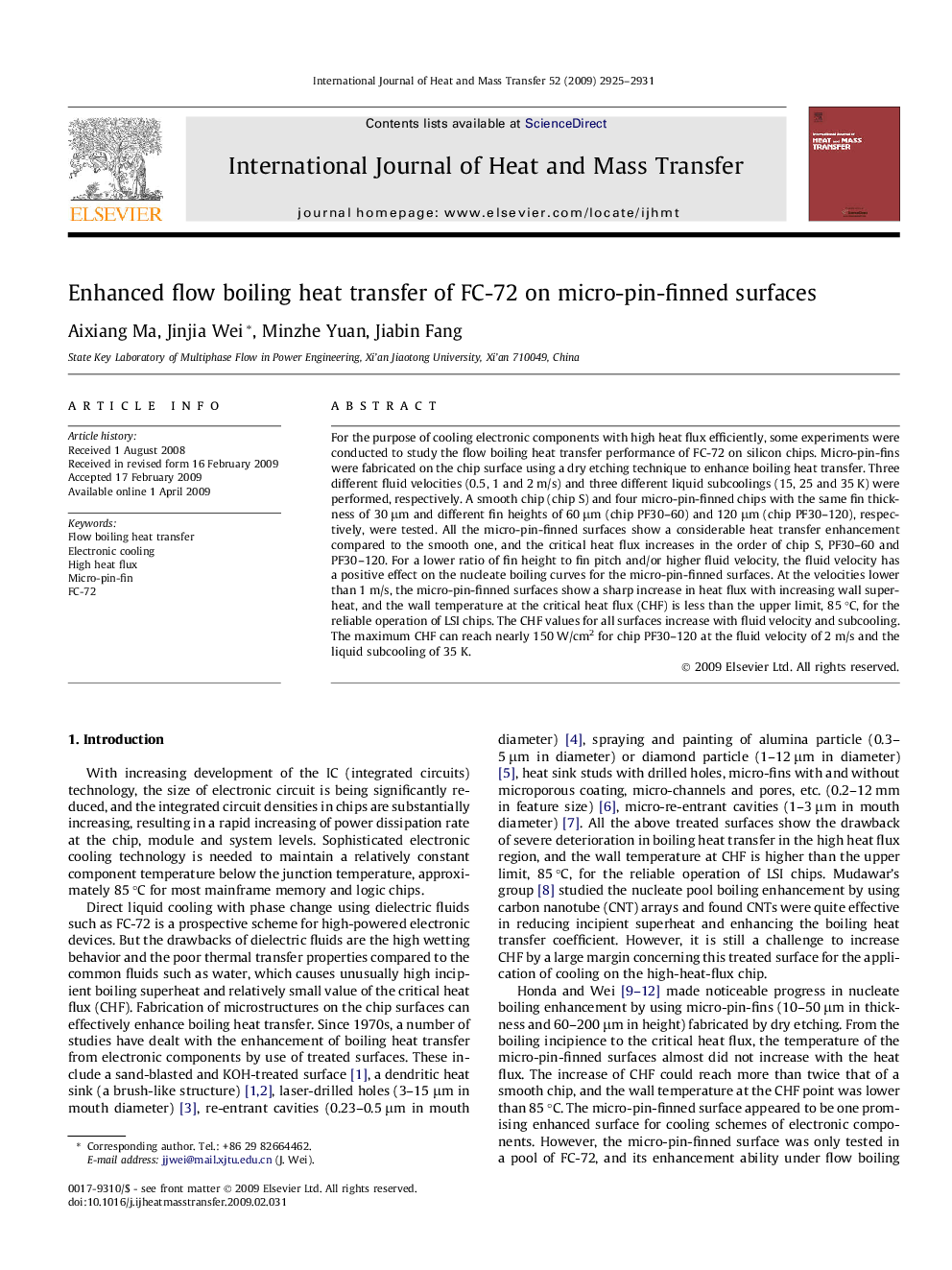| Article ID | Journal | Published Year | Pages | File Type |
|---|---|---|---|---|
| 661956 | International Journal of Heat and Mass Transfer | 2009 | 7 Pages |
For the purpose of cooling electronic components with high heat flux efficiently, some experiments were conducted to study the flow boiling heat transfer performance of FC-72 on silicon chips. Micro-pin-fins were fabricated on the chip surface using a dry etching technique to enhance boiling heat transfer. Three different fluid velocities (0.5, 1 and 2 m/s) and three different liquid subcoolings (15, 25 and 35 K) were performed, respectively. A smooth chip (chip S) and four micro-pin-finned chips with the same fin thickness of 30 μm and different fin heights of 60 μm (chip PF30–60) and 120 μm (chip PF30–120), respectively, were tested. All the micro-pin-finned surfaces show a considerable heat transfer enhancement compared to the smooth one, and the critical heat flux increases in the order of chip S, PF30–60 and PF30–120. For a lower ratio of fin height to fin pitch and/or higher fluid velocity, the fluid velocity has a positive effect on the nucleate boiling curves for the micro-pin-finned surfaces. At the velocities lower than 1 m/s, the micro-pin-finned surfaces show a sharp increase in heat flux with increasing wall superheat, and the wall temperature at the critical heat flux (CHF) is less than the upper limit, 85 °C, for the reliable operation of LSI chips. The CHF values for all surfaces increase with fluid velocity and subcooling. The maximum CHF can reach nearly 150 W/cm2 for chip PF30–120 at the fluid velocity of 2 m/s and the liquid subcooling of 35 K.
